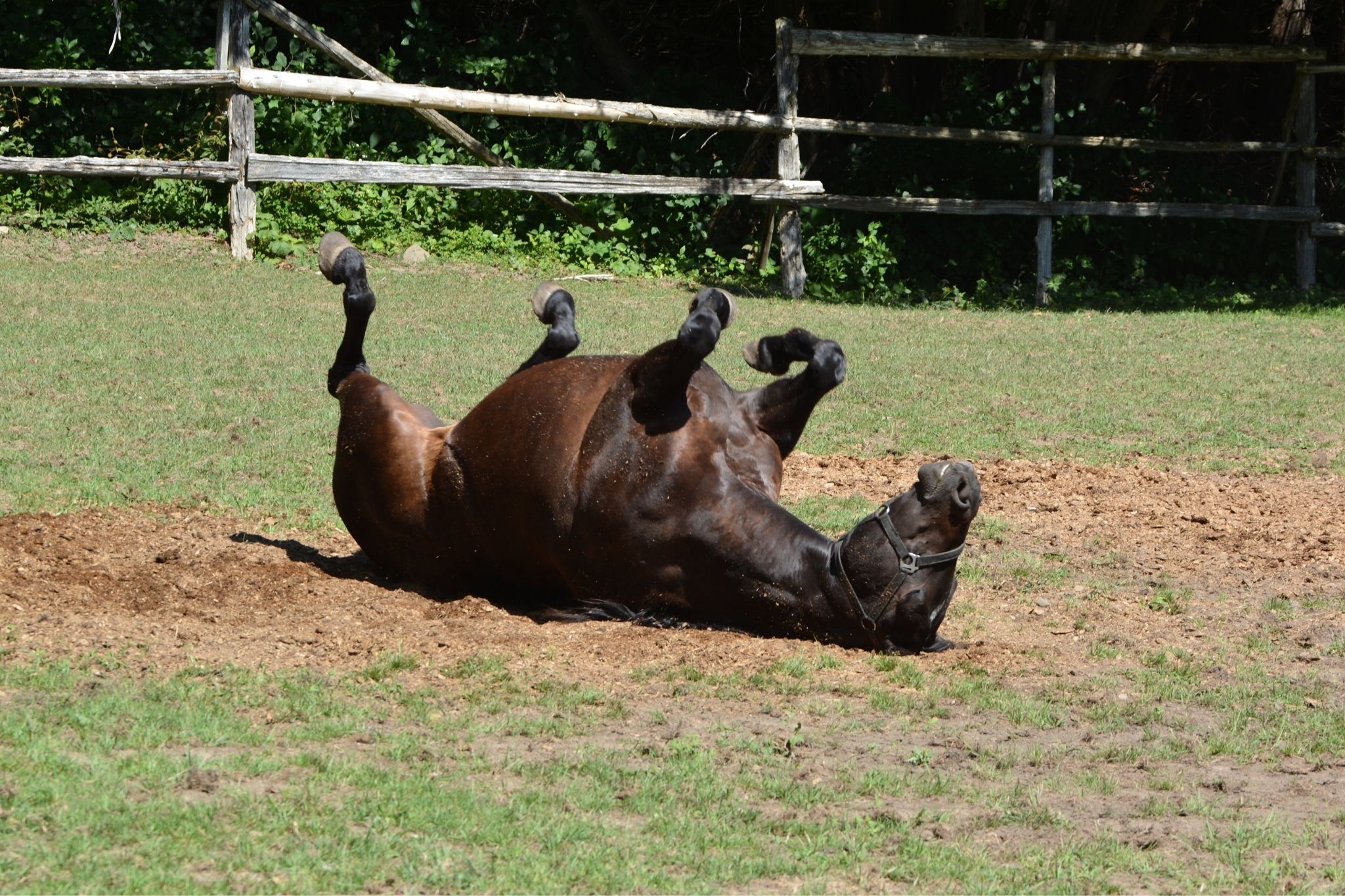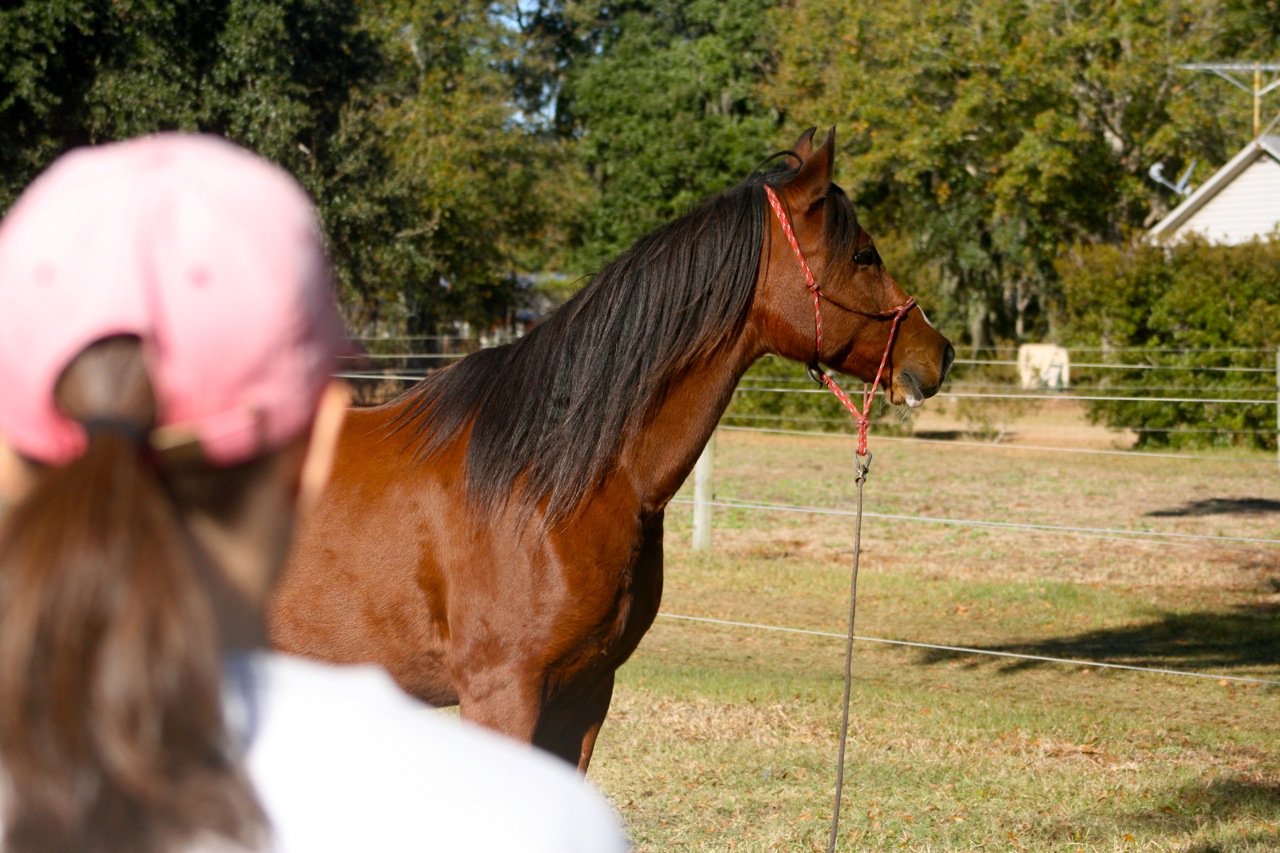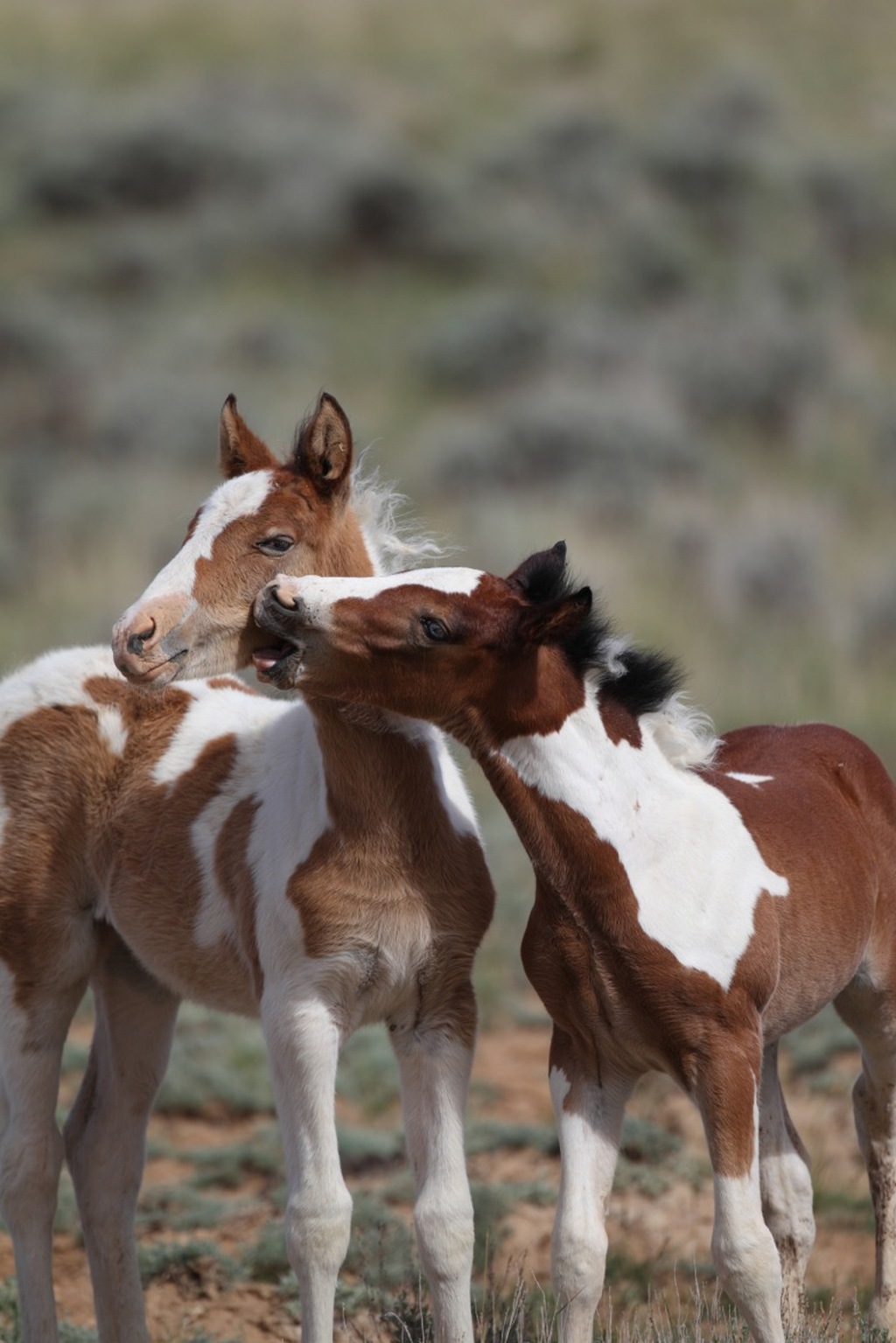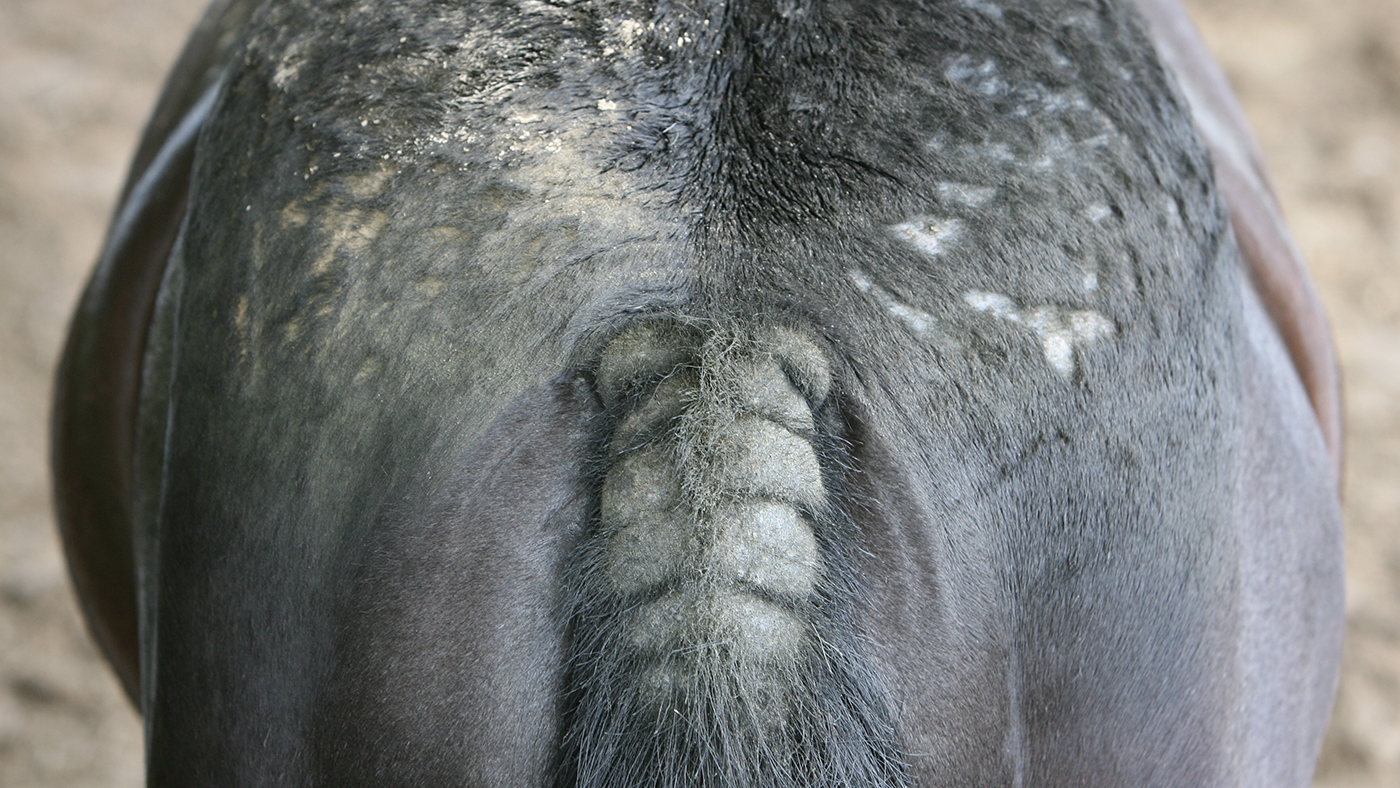Horses are majestic creatures with a range of behaviors that often intrigue their human companions. One such behavior that commonly catches the eye is when a horse rolls on the ground. This action can serve various purposes in a horse’s life, from pleasure and self-grooming to maintaining body temperature and communicating social status. However, it’s important for horse owners to differentiate between rolling for enjoyment and rolling as a sign of discomfort or pain, such as colic. Understanding this behavior can help ensure the well-being of these beloved animals.
Exploring the Complexities of Equine Rolling Habits

Equine behavior, particularly the act of rolling, can provide valuable insights into their health and social dynamics. Factors such as the time of year, the horse’s level of activity, and interactions with other horses can all influence this behavior. By observing when and how horses roll, caretakers can better understand these animals and address their needs more effectively.
How Seasonal Changes Affect Equine Rolling
Seasonal changes can alter the motivations behind a horse’s decision to roll. For instance, during winter, horses may roll to alleviate itchiness caused by their denser coats. In contrast, during warmer weather, rolling in dust and mud can help deter pesky insects. Shedding their seasonal coats is another catalyst for increased rolling as horses attempt to remove loose hair more effectively.
Rolling and Herd Dynamics
Rolling behavior can also reflect a horse’s position within its herd. A leading horse may use rolling as a way to assert its dominance by marking territory, while more submissive members might roll as a gesture of compliance or to better assimilate with the herd.
Preferences for Rolling Surfaces
- Cushioning Post-Exercise: After physical exertion, horses might seek out soft ground to protect their muscles while rolling.
- Natural Hoof Care: The abrasive nature of sand can aid in naturally maintaining hoof condition, in addition to its grooming benefits.
- Massage Effect: Rolling in grassy areas may be preferred for the massaging sensation it provides to the horse’s body.
The Impact of Weather on Rolling
Weather conditions play a significant role in a horse’s inclination to roll. For example, horses may avoid rolling on damp days to keep their fur as dry as possible, whereas on dry, sunny days, they are more likely to roll to protect themselves against the sun with a dust layer. The presence and quality of rolling spots, such as open fields or sandy rings, can also influence these behaviors.
Rolling in Relation to Exercise
Equines may roll before being saddled as a part of their pre-ride ritual to loosen their muscles. After a ride, rolling can be a way to comfort any areas that felt pressure from the saddle. Recognizing these habits can inform riders about their horse’s reactions to different types of tack and the demands of their physical activities.
Interpreting Rolling Patterns
A horse’s rolling patterns, including how often and how long they roll, can be indicative of their emotional state and physical well-being. An occasional, swift roll might be a sign of playfulness or a simple scratch, while continuous or extended rolling could suggest the horse is trying to relieve an ongoing annoyance or discomfort. Keeping track of these behaviors helps horse owners and caretakers to more accurately gauge and respond to their horses’ needs.
Enhancing Equine Well-being Through Understanding Rolling

Rolling is a fascinating equine behavior that encompasses self-maintenance and other physiological benefits, contributing to the overall well-being of horses. Caretakers who comprehend the full spectrum of advantages associated with rolling can offer better care for these animals.
Rolling for Equine Self-Maintenance and Physical Comfort
When horses engage in rolling, they not only address skin health by removing dead cells and parasites but also perform a type of self-assessment for any physical discomfort or irregularities they may be experiencing.
Monitoring Rolling for Health Insights
By keeping an eye on how horses roll, including their level of enjoyment and any changes in routine, caretakers can glean important insights into the animals’ health and swiftly address potential issues.
- Alleviating Tension: For horses, rolling is a natural and effective way to alleviate stress and tension.
- Spinal Alignment: Similar to a chiropractic adjustment, rolling can help in maintaining spinal health and flexibility.
- Effective Grooming: Rolling on different textures aids horses in grooming themselves and controlling external parasites.
Rolling for Recovery and Rehabilitation
Horses often roll after exerting themselves, which serves as a natural cool-down mechanism that helps prevent muscle stiffness. Additionally, controlled rolling can be beneficial for horses recovering from injuries, as it promotes circulation and mobility in a supervised and safe manner.
Creating Ideal Rolling Environments
Equine caretakers can enhance the health benefits of rolling by providing safe and suitable areas for this activity. These designated spots can feature varying surfaces to meet specific needs, such as sand for hooves or soft bedding for comfort.
Evaluating Healthy Rolling Behaviors
Indications of beneficial rolling include a horse’s ability to roll on both sides, a lack of distress during the activity, and a calm state afterward. Reluctance or agitation when rolling, on the other hand, might necessitate a health evaluation to ensure the horse’s comfort.
Grasping the link between horse health and rolling empowers owners and caretakers to support their horses’ instinctual practices, fostering their physical and mental well-being in various environments.
Enhancing Knowledge of Equine Self-Care Practices

The intricate self-care practices of horses, such as engaging in dust baths and rolling in mud, are critical behaviors for their hygiene and well-being. These actions go beyond mere enjoyment; they are fundamental to their health and satisfaction. We will explore the specifics of these practices and their positive impact on horses.
Advantages of Mud and Dust in Equine Care
Dust and mud play a pivotal role in the self-care regimen of horses. Dust baths utilize fine particles to absorb excess moisture and oils from the horse’s skin, which is particularly useful in warm climates or after vigorous exercise. Mud baths offer similar benefits, providing a natural barrier against insects and UV rays. Here is an overview of how these elements aid in equine maintenance:
- Barrier Against Elements: Both dust and mud create protective layers that insulate the horse from environmental stressors.
- Community Bonding: Participating in these grooming behaviors can also serve as a form of social interaction among horses.
Intelligent Selection of Grooming Locations
Horses exhibit a keen sense of the environment when selecting the ideal spots for their self-grooming activities. They look for the best conditions, whether it is fine dust or pliable mud, to maximize the cleansing and protective benefits. The chosen locations are typically separate from where they eat and rest to preserve the cleanliness of those areas.
Systematic Approach to Self-Grooming
Horses approach rolling with a methodical technique, often starting on one side before switching to ensure full coverage. This meticulous process highlights their instinctual drive for self-maintenance and their ability to address hard-to-reach areas on their bodies.
Health Insights Gained from Grooming Behaviors
Observant caregivers can deduce valuable information about a horse’s health by watching their grooming habits. Variations in how often or in what manner horses roll can be indicative of skin conditions or parasite infestations. Keeping an eye on these patterns is not only insightful for understanding their health status but also proactive in spotting issues that may necessitate medical attention.
Deciphering the Subtleties of Equine Communication

Understanding the nuances of equine communication is a comprehensive skill that deepens the bond between horses and their human caregivers. Recognizing the various expressions and movements horses use to convey their emotional and physical states is key in providing appropriate care and building trust.
Postural Indicators of Equine Disposition
Examining a horse’s body language before and after rolling can provide insights into its mood and health. The position of a horse’s ears and tail, along with the carriage of its head, serves as indicators of its emotional state, which can range from curiosity to discomfort.
Facial Expressions and Eye Movements
The facial expressions and eye movements of horses are windows into their feelings. Attentive observation of these features can help interpret a horse’s level of stress or contentment, which is vital in assessing their comfort, especially following behaviors like rolling.
- Relaxed Facial Features: Suggests a horse may be enjoying its environment, potentially during a restful roll.
- Tense Facial Features: Indicates the possibility of unease, warranting a closer examination of the horse’s well-being.
Behavioral Sequences and Their Significance
Observing the behavioral sequences surrounding rolling can be telling of a horse’s condition. A horse that shakes off after rolling likely feels rejuvenated, while one that struggles to roll may be signaling discomfort or distress.
Interaction with Surroundings
How a horse interacts with its environment in relation to rolling can reveal its sense of security and health. A horse that chooses a spot to roll with confidence usually feels at ease, while one that exhibits hesitation may be facing discomfort or other health concerns.
Distinguishing Between Relaxation and Stress
Recognizing the difference between a horse’s relaxed state during a roll and signs of stress or pain is crucial. Signs of relaxation are characterized by a serene demeanor, whereas stress indicators include rapid breathing and visible restlessness.
- Relaxed Horse: Exhibits slow, purposeful movements and steady respiration.
- Stressed Horse: Displays quickened, irregular movements and may show signs of labored breathing.
Observations Following Rolling
The behavior a horse displays immediately after rolling can provide valuable information regarding its health. A horse that rises and shakes off energetically typically feels good, while one that lingers on the ground or rises with difficulty may require further health assessment.
Mastering the interpretation of equine body language involves piecing together the whole context of the horse’s behavior. Careful observation and understanding can help create a supportive environment, allowing horse handlers to cater to the individual care needs of their horses and nurture a profound mutual understanding.
If you’re curious about the various behaviors exhibited by horses, you might find it interesting to explore some of their other common actions. For instance, have you ever wondered why horses foam at the mouth? Or what it means when you see a horse bobbing its head? And there’s also the curious sight of a horse flapping its lips. Each of these behaviors can tell us something about a horse’s physical condition or emotional state. Join us as we delve into the reasons behind these fascinating equine habits.
Conclusion: The Significance of Rolling in Horse Behavior

Rolling is a complex and significant aspect of equine behavior. It can indicate a horse’s physical state, emotional well-being, and social status, making it an important behavior for horse owners to understand. Whether rolling in the dust after a satisfying ride or as a means to communicate with fellow horses, rolling has a vital place in the life and health of these animals. Recognizing and responding appropriately to this behavior ensures that horses remain happy, healthy, and well-groomed.
For more in-depth insight into horse rolling behavior, Horse & Hound provides a comprehensive guide that discusses the various reasons horses roll and the significance of this behavior in their daily lives.




Установка систем видеонаблюдения обеспечит защиту территории на постоянной основе.
Продвинутые системы обеспечивают надежный обзор даже при слабом освещении.
Мы предлагаем различные варианты оборудования, идеальных для дома.
установка наружного видеонаблюдения
Качественный монтаж и сервисное обслуживание обеспечивают простым и надежным для всех заказчиков.
Оставьте заявку, и узнать о персональную консультацию по внедрению систем.